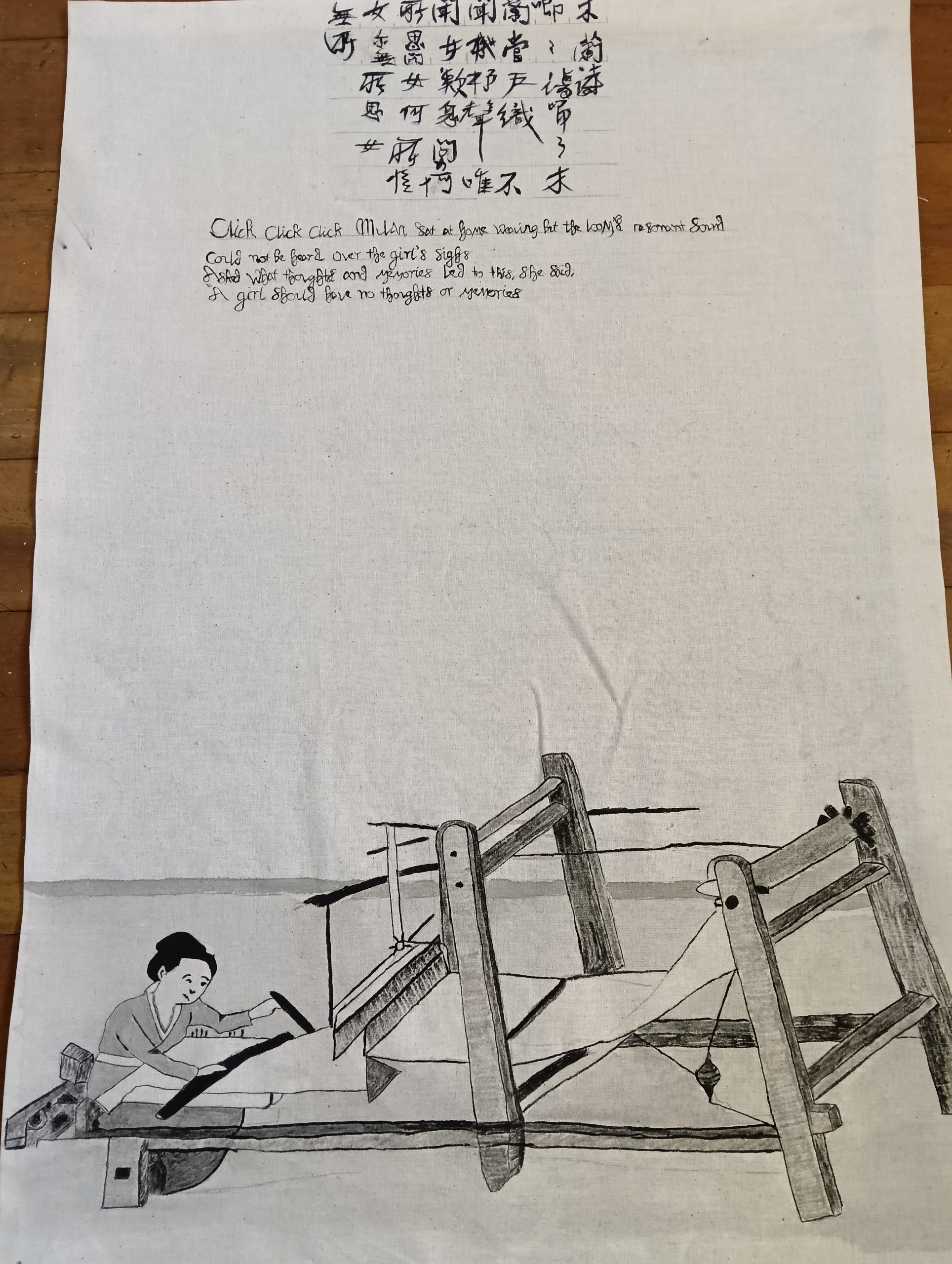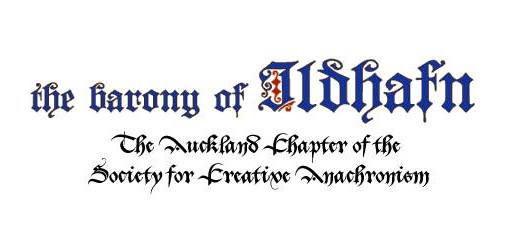Category
Verba volant, sed scripta manent (spoken words fly away, written words remain).
Entrant
Lihua Li
Entry
Chinese Ink on Calico
A Chinese ink painting inspired by Chinese art from the Song Dynasty (1160-1225) which depicts both figures, landscape and written word (usually in the form of songs or poems).
Media used:
Calico fabric (unsized, used due to cost restrictions.) Original Chinese ink paintings would have been painted on silk cloth which had been sized with “milk”. Testing using cheap silk suggests this may have been soy milk.
Chinese black ink (part of a calligraphy set I own). This ink is charcoal set with a glue (traditionally animal glue such as rabbit). It is pressed into a stick mould and allowed to dry. Ink is created by grinding and mixing pigment from the ink stick with water.
Brushes: I used traditional Chinese horse hair brushes made from bamboo and bound horse hair. These have been handed down to me from my mother.
The poem used is the oldest surviving example of the Ballard of Mulan inscribed by Mi Fu in 1094 (https://mulanbook.com/pages/northern-wei/ballad-of-mulan). I have then translated it with the help of my Aunty and this existing translation https://people.wku.edu/haiwang.yuan/China/tales/mulan.htm
The image used was copied from https://www.selvedge.org/blogs/selvedge/a-world-of-looms I was unable to find the original image used on the post, however the style of dress, loom and hair suggest the subject is from the Tang or Ming dynasties.
When painting the image, although coloured inks were available in period and well before the Song Dynasty (
https://www.comuseum.com/painting/figure-painting/#) I chose to use a black and white style. The black and white style was common in early landscape paintings where colour was minimized. The different shades of grey were created by mixing more water with the ink. When painting on silk, Chinese painters often used an ink wash on the back of the silk to create the background shade. This allowed for light shades to be further “washed out” or diluted to create an even lighter shade. As I was using calico, this was not something I was able to recreate.
It is said that traditional painting masters were tested on their ability to consistently create 16 shades of black/grey (https://www.artofthebrush.ie/chinese-ink-painting-techniques). My recreation uses between 5 and 8 shades. 5 shades can be created through the use of traditional brush techniques and these are primarily what I used, although I did experiment with different shades within these techniques.
This panel is the first of a series, over which the entire 360 word/character Ballard will be depicted.

